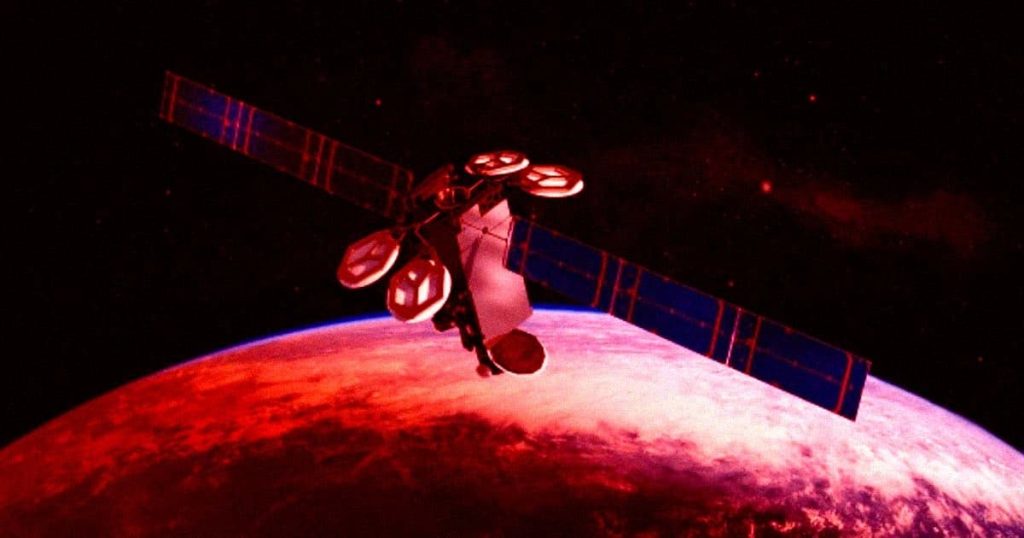They range from “small fragments roughly the size of a softball to larger pieces up to the size of a car door.”
Orbital Wreck
Earlier this month, a massive satellite that belonged to multinational service provider Intelsat and was built by Boeing mysteriously exploded into pieces.
Beyond an official update detailing an “anomaly” that resulted in a “total loss” of the satellite dubbed IS-33e, officials have yet to determine the exact cause.
And the extent of the resulting cloud of space junk is only starting to come to light. As SpaceNews reports, space-tracking company ExoAnalytic Solutions has identified a whopping 500 pieces of debris now littering the Earth’s geostationary orbit some 22,000 miles above the surface — and that’s only the big ones.
“The size of the debris we are tracking ranges from small fragments roughly the size of a softball to larger pieces up to the size of a car door,” ExoAnalytic CTO Bill Therien told SpaceNews. “The majority of the tracked objects are on the smaller end of that spectrum, which contributes to the difficulty of consistently observing all the debris pieces.”
World Pieces
The satellite, which was providing broadband services including internet and phone communication services to parts of Europe, Africa, and most of Asia, suddenly disintegrated on October 19 — likely either due to being hit by something else at high speed or due to a localized blast.
Space trackers are now trying to understand how the newly created pieces of space junk could affect the operations of other satellites in geostationary orbit. But as SpaceNews points out, it’s still too early to tell if these pieces are running the risk of colliding with other assets.
It’s nonetheless a precarious situation, with the potential for space debris triggering a potentially catastrophic cascading series of events, a phenomenon known as Kessler syndrome.
While we have yet to hear about the root cause of ISS-33e’s demise, its predecessor Inteslat-29e was similarly declared a “total loss” in 2019 after just three years in orbit. An investigation later concluded that it either was hit by a meteoroid or had a wiring flaw that led to an electrostatic discharge triggered by bad solar weather in orbit.
Meanwhile, Intelsat is figuratively picking up the pieces, with a spokesperson telling SpaceNews that “migration and service restoration plans are well underway.”
More on the satellite: Large Boeing Satellite Suddenly Explodes Into Pieces
Share This Article

